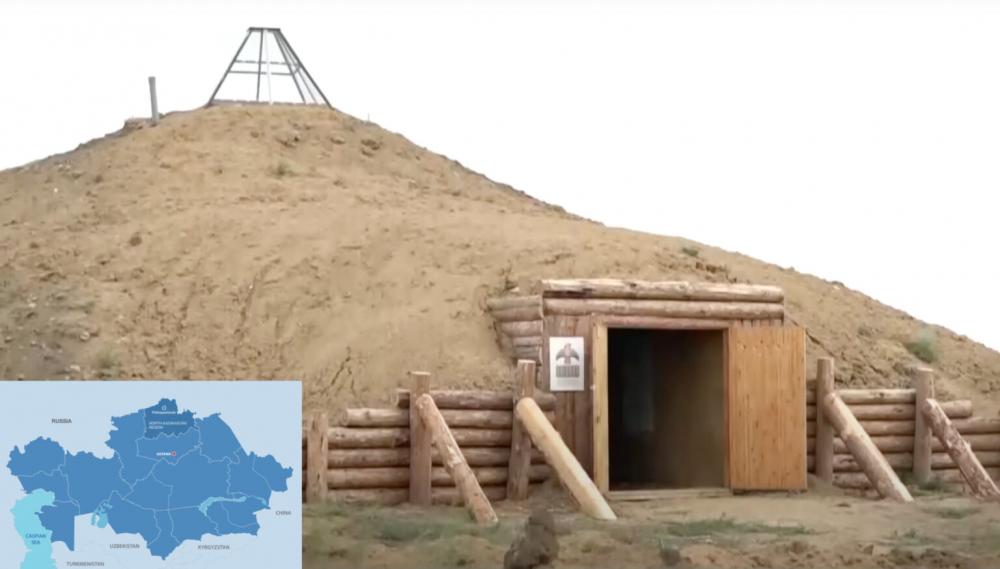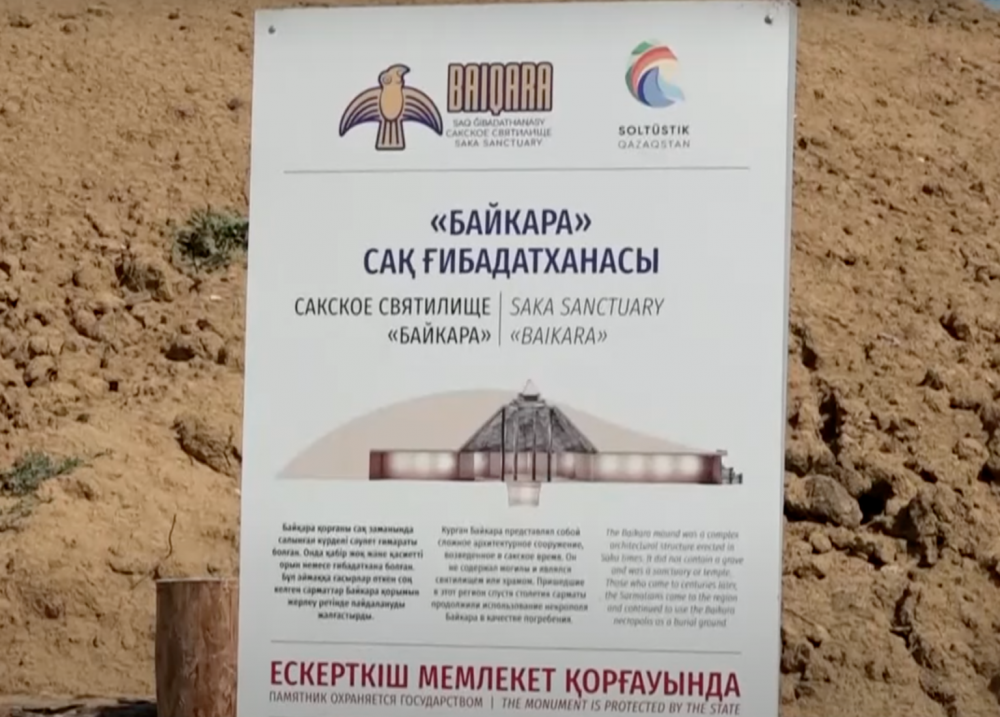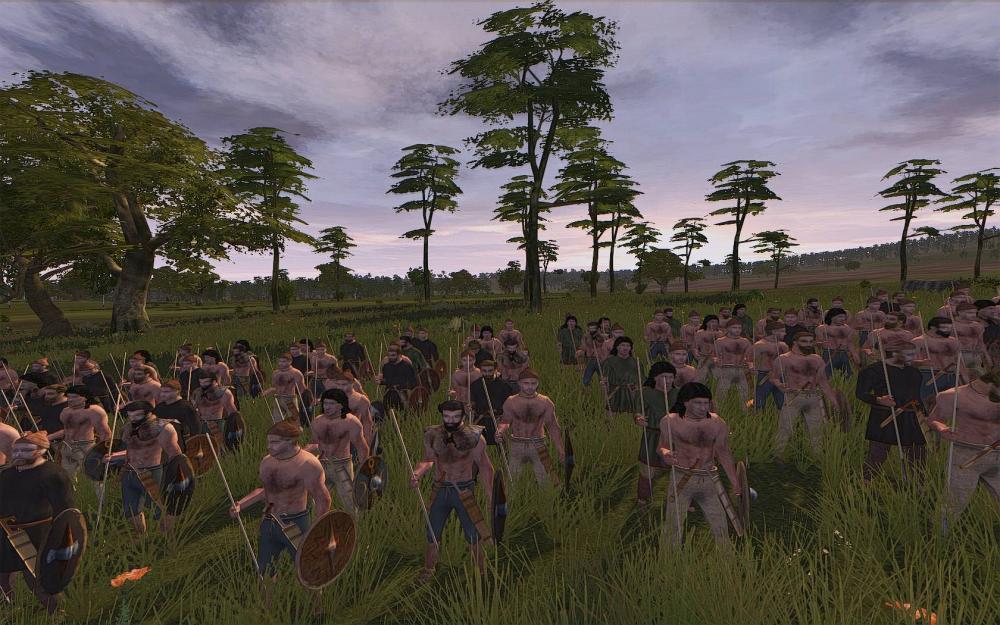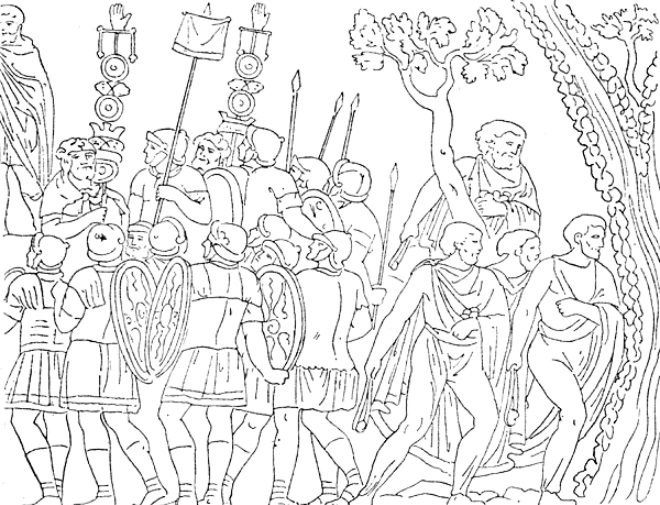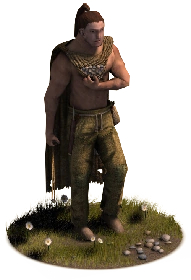-
Posts
446 -
Joined
-
Last visited
-
Days Won
3
Everything posted by Ultimate Aurelian
-
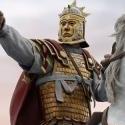
Civ: Germans (Cimbri, Suebians, Goths)
Ultimate Aurelian replied to wowgetoffyourcellphone's topic in Delenda Est
Tacitus says the ships of the Suiones did not have sails, the over all description is similar to the Hjortspring boat. It's possible sails might have spread through Celtic influence, but this is pure speculation. -

Civ: Germans (Cimbri, Suebians, Goths)
Ultimate Aurelian replied to wowgetoffyourcellphone's topic in Delenda Est
Is not the rock art from the bronze age? It's possible they would have abandoned the sail at some point (the Nordic bronze age seem wealthier and more connected than the later iron age cultures) and it was reintroduced later. -

Civ: Germans (Cimbri, Suebians, Goths)
Ultimate Aurelian replied to wowgetoffyourcellphone's topic in Delenda Est
That is what i was thinking, yes. -

The Iberian conundrum - Solving a misleading patchwork
Ultimate Aurelian replied to Genava55's topic in General Discussion
''Military colony'' type building? And maybe the citizens you train there can build a few more of the Lusitanian/Celtiberian buildings -

Civ: Germans (Cimbri, Suebians, Goths)
Ultimate Aurelian replied to wowgetoffyourcellphone's topic in Delenda Est
There might be enough justification for a heavier elite infantry. It is not described what weapons they had; but swords are possible. We know the Cimbrian cavalry used swords. But also the women of the Ambrones, so they don't seem to be only for cavalry. -
This thread has some interesting references (later derails into a very long argument about iron cuirasses) https://www.twcenter.net/forums/showthread.php?664783-Hunnic-equipment/
-
For their units you could have something like Infantry "Pikeman" (the guys with big spears and square shields) Infantry Axeman Slinger Archer Champion Swordsman Woman citizen Priestess Merchant Fishing ship Merchant Ship Light Ship High Priestess* King* Great Warrior* *We don't know the name of historical Minoan rulers, so heros could be more generic archetypes (the other option would be to use Minos and other character from Greek mythology)
-
https://www.thebritishacademy.ac.uk/documents/1002/12_Parzinger_1836_Final_0.pdf This temple has recently been restored: https://astanatimes.com/2023/07/resurrecting-ancient-glory-experts-restore-baikara-temple-in-north-kazakhstan/
-

Narrative Campaign General Discussion?
Ultimate Aurelian replied to Lion.Kanzen's topic in Gameplay Discussion
On one hand it would allow to add more civs. On the other hand the existing civs might be downgraded to some degree when they are merged into an umbrella civ. -

Civ: Germans (Cimbri, Suebians, Goths)
Ultimate Aurelian replied to wowgetoffyourcellphone's topic in Delenda Est
Well that is to a certain point always going to happen in a historical game like this; players will be introduced to new concepts that might sometimes confuse them at first. There are already a few civilizations that are not very well known, or different from the stereotypes some people might have (IE Ptolemies instead of more stereotypical Egyptians like in RTW, Romans in the vanilla game based on the Republic). -

Civ: Germans (Cimbri, Suebians, Goths)
Ultimate Aurelian replied to wowgetoffyourcellphone's topic in Delenda Est
They are separated from the Britons. Not sure if there is enough differences between the Germans to justify something similar (compared to Suebi, the Cimbri seem more nomadic, more influenced by Gauls and with heavier equipment). -

Civ: Germans (Cimbri, Suebians, Goths)
Ultimate Aurelian replied to wowgetoffyourcellphone's topic in Delenda Est
Some sort of animals symbol is mentioned by Plutarch; but the description is pretty vague. It seems to be a Port helmet, introduced around 60 B.C. -

Civ: Germans (Cimbri, Suebians, Goths)
Ultimate Aurelian replied to wowgetoffyourcellphone's topic in Delenda Est
This helmet might be too late for the Cimbrian War timeframe. It is a type that was introduced the 1st century BC and use in the Gallic Wars. -
It would be interesting to have some bronze age cultures from Europe. Although a lot of it would require speculation due to the lack of written sources. Since there are no known figures from those cultures, the heroes (if they have them at all) would have to be based on generic archetypes (high priest, king, great warrior...).
-

Civ: Germans (Cimbri, Suebians, Goths)
Ultimate Aurelian replied to wowgetoffyourcellphone's topic in Delenda Est
Northern Germany and Poland, facing the Baltic. -

Civ: Germans (Cimbri, Suebians, Goths)
Ultimate Aurelian replied to wowgetoffyourcellphone's topic in Delenda Est
Pytheas (cited by Pliny) says the Teutones originated somewhere around Pomerania. It's a bit of a stretch, but Teutobod's equipment could be based on that region. https://www.enapp.muzeum.lebork.pl/archeology/oksywie-culture-grave/ It's important to note the peoples in this region were the only Germans using round shields at the time (So the normal Cimbri or Suebi units should not have round shields). -

Civ: Germans (Cimbri, Suebians, Goths)
Ultimate Aurelian replied to wowgetoffyourcellphone's topic in Delenda Est
https://en.wikipedia.org/wiki/Divico there is a third interesting figure from the Cimbrian War, but he was not Germanic. -

Civ: Germans (Cimbri, Suebians, Goths)
Ultimate Aurelian replied to wowgetoffyourcellphone's topic in Delenda Est
I think one of the Gauls chainmail textures could work as placeholder (Again, Cimbri were relatively more influenced by Celts). Regarding hero bonuses, i can only really find useful information on Teutobod and Boiorix. For the other ones (like Lugius) the only information is their fate after Vercellae. -

Civ: Germans (Cimbri, Suebians, Goths)
Ultimate Aurelian replied to wowgetoffyourcellphone's topic in Delenda Est
For the Cimbri i think they could have champion sword cavalry instead; with long swords (Gaul swords could be reused), armor and white shields. The heroes could probably be armored as well. -

Civ: Germans (Cimbri, Suebians, Goths)
Ultimate Aurelian replied to wowgetoffyourcellphone's topic in Delenda Est
So perhaps the Cimbrian faction could have archer infantry as well. -

Civ: Germans (Cimbri, Suebians, Goths)
Ultimate Aurelian replied to wowgetoffyourcellphone's topic in Delenda Est
Plutarch gives the following description of Cimbrian warriors It seems they were using Celtic equipment; the helmets are probably Celtic helmets, decorated with animal figurines. Or maybe helmets covered in fur (like this Roman helmet modified by Batavians): There is also the theory that the wooden helmets found in Denmark were wood copies of Negau helmets (In which case they might have adopted the original bronze model from contact with other peoples, but this is speculation). -

===[TASK]=== (early) German Shield Patterns
Ultimate Aurelian replied to wowgetoffyourcellphone's topic in Official tasks
Some posts from earlier threads; could be useful for Suebian shields (Gives an idea what patterns they used). Wheel symbol (civ emblem?) -

Pre-Colonial Mod General Ideas and Gameplay
Ultimate Aurelian replied to Trinketos's topic in Projects
Missisipian warriors (some speculation): https://www.artstation.com/artwork/YBGGOY -

Civ: Germans (Cimbri, Suebians, Goths)
Ultimate Aurelian replied to wowgetoffyourcellphone's topic in Delenda Est
The merchant could have an ox cart or horse (Donkeys were not common in Germania; donkeys were only introduced in Gaul after the Roman conquest). The slingers could have capes like the other units. They may even have used them to carry rocks like the (Germanic?) slingers in the column of Marcus Aurelius (Too much work to animate, but they could just have a cape as a nod to that.) This is how EB2 portrays them Some of the units seem to have Celtic Montefortino helmets which might be outdated for the timeframe (They fell out of use before the Gallic Wars.). -

Civ: Germans (Cimbri, Suebians, Goths)
Ultimate Aurelian replied to wowgetoffyourcellphone's topic in Delenda Est
https://tidsskrift.dk/kuml/article/view/24902 It has been speculated that the statue was covered in clothing Tacitus' Germania has an interesting passage regarding the cult of Nerthus, which may hint at that as well (Or just a cloth covering the chariot?) Regarding antlers or animal heads on statues, i could not find anything about it. Antler seem more associated with celtic deities. In later germanic mythologies most of the gods are human in appearance (Although there are couple depictions of figures with horned headgear).





